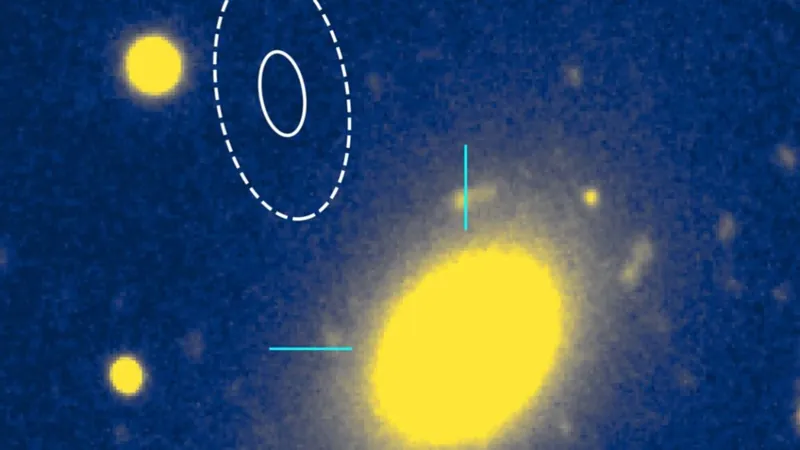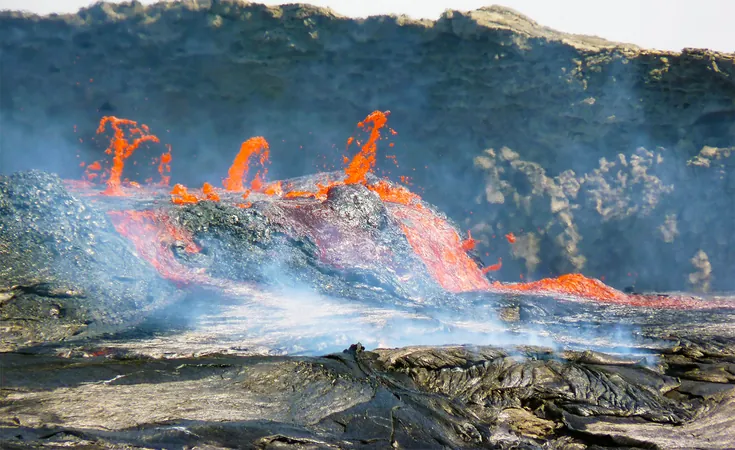
Cosmic Mystery Deepens: Fast Radio Bursts Emanate from a Dead Galaxy!
2025-01-22
Author: Ling
Astronomers are scratching their heads over a remarkable discovery regarding fast radio bursts (FRBs) — enigmatic explosions of radio-frequency radiation that last only a few microseconds. Recent findings highlight an FRB coming from a long-dead galaxy that has ceased all star formation, as described in a groundbreaking paper published in *The Astrophysical Journal Letters*.
To date, scientists have cataloged over a thousand FRBs, which are categorized into two types: those that repeat and those that appear only once before going silent. The typical speculation is that the repeating bursts are generated by something that survives the explosive event, such as neutron stars or black holes, particularly a subtype known as magnetars. Surprisingly, only about 3% of FRBs fall into the repeating category, while the remainder are one-off mysteries that could be destroying their sources in the process.
Interestingly, astronomers have proposed various theories to explain the nature of these bursts, considering processes ranging from the catastrophic collapse of neutron stars to phenomena associated with pulsars. However, the discovery of an FRB in a seemingly inhospitable, inactive galaxy challenges long-accepted views on these cosmic signals.
In July, researchers delved into the polarized light emitted from FRBs, further illuminating potential differences between those that repeat and those that do not. The findings suggested that while some FRBs might find themselves nearby pulsar-like emissions, the physical conditions prompting them could produce dramatically different outcomes.
The pivotal discovery, made by Calvin Leung, a postdoctoral researcher at the University of California, Berkeley, involved data from the Canadian Hydrogen Intensity Mapping Experiment (CHIME). This innovative instrument covers vast areas of the sky, making it adept at capturing the transient nature of FRBs. Leung's analysis revealed a repeating FRB, initially detected in February 2024 in the constellation Ursa Minor, and crucially pinpointed its source to the outskirts of a cosmic graveyard — a galaxy devoid of star formation.
This revelation casts doubt on the possibility of magnetars being the source, raising the tantalizing question: could the FRB inhabit a globular cluster, a tightly packed group of ancient stars than can exist outside galaxies? If this hypothesis holds, it would mark only the second instance of an FRB being linked to such a region.
Moreover, CHIME is set to expand its capabilities with the addition of a new outrigger radio array in Northern California, expected to enhance the precision of FRB location estimates significantly. By combining data from multiple telescopes, researchers aim to resolve further intricacies surrounding these fleeting cosmic phenomena.
Vishwangi Shah, a graduate student involved in this research at McGill University, stated, "This results challenges existing theories that tie FRB origins to phenomena in star-forming galaxies." Indeed, the implications of this discovery could reshape our understanding of both FRBs and the evolution of galaxies.
As we plunge deeper into the cosmos's mysteries, stay tuned — the universe might just be full of surprises, lurking in the shadows of the dead!




 Brasil (PT)
Brasil (PT)
 Canada (EN)
Canada (EN)
 Chile (ES)
Chile (ES)
 Česko (CS)
Česko (CS)
 대한민국 (KO)
대한민국 (KO)
 España (ES)
España (ES)
 France (FR)
France (FR)
 Hong Kong (EN)
Hong Kong (EN)
 Italia (IT)
Italia (IT)
 日本 (JA)
日本 (JA)
 Magyarország (HU)
Magyarország (HU)
 Norge (NO)
Norge (NO)
 Polska (PL)
Polska (PL)
 Schweiz (DE)
Schweiz (DE)
 Singapore (EN)
Singapore (EN)
 Sverige (SV)
Sverige (SV)
 Suomi (FI)
Suomi (FI)
 Türkiye (TR)
Türkiye (TR)
 الإمارات العربية المتحدة (AR)
الإمارات العربية المتحدة (AR)